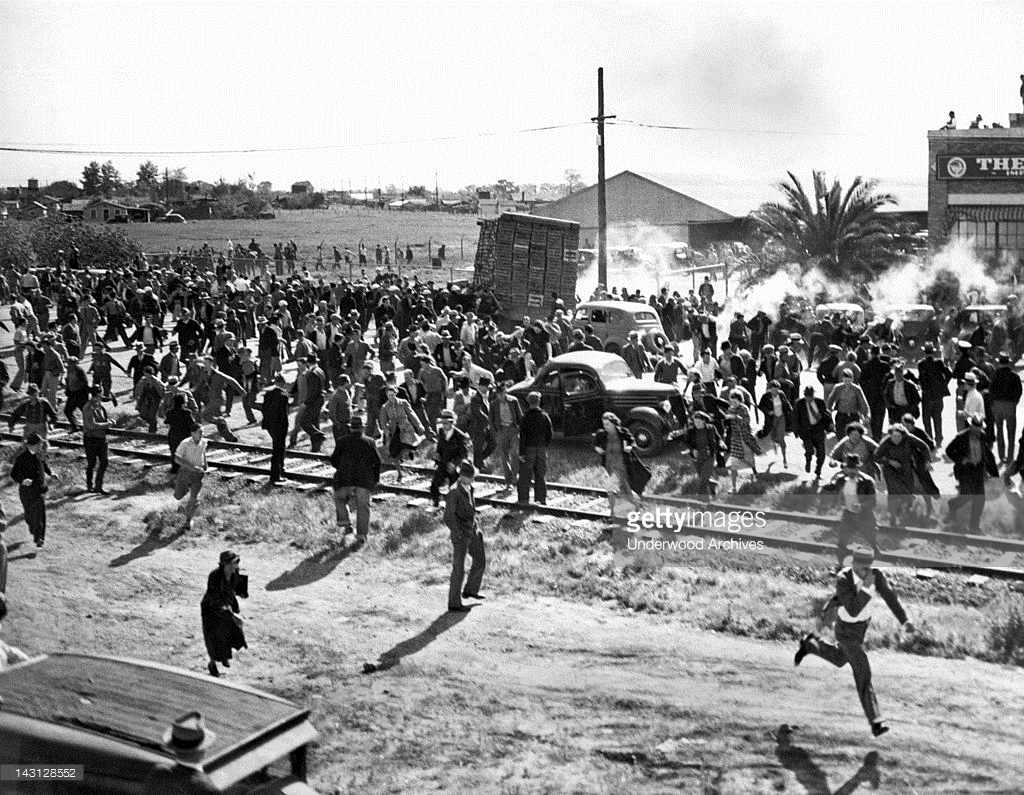
On this day in labor history, the year was 1937.
That was the day a truce came in the Stockton cannery workers strike.
It was a pivotal moment that embodied the conflicts of the 1930s labor movement.
The AFL initially wrote agricultural workers off as unorganizable.
They soon raced to unionize California canneries ahead of the International Longshoremen’s Association’s march inland to organize warehouse workers.
By early April, Agricultural Workers Union 20221, representing five canneries demanded higher pay, better working conditions and a closed shop.
The canners and growers refused on the basis they had just granted a 25% raise to the workers.
They then attempted to spike union support among workers, whether AFL or CIO, by arguing, “one was dominated by Communists, the other by Racketeers, so take your choice.”
Soon they formed a Citizens Labor Investigating Committee to thwart the impending strike.
Picket lines went up in the early hours of April 15.
Growers and canners appealed to law enforcement to ‘do something’ and appealed to the public to enlist in the forcible reopening of the canneries.
Dubbed the pick handle army, anti-union forces joined the sheriff’s department in confronting strikers on the 23rd.
There they battled with picketers for over 3 hours in what is referred to as the ‘Spinach Riot.’
Picketers confronted scabs and spinach delivery trucks and were beaten, gassed and shot by sheriff’s forces, resulting in 1 death and 58 injuries of strikers.
Considered one of the worst labor battles in California’s history, the State Federation moved to strip the union of its charter once the truce was called.
They reorganized workers as Cannery Workers Union 20676 and won sole recognition.
But agricultural workers would remain unorganized for years to come.
More Episodes
 2024-08-30
2024-08-30
 2024-08-28
2024-08-28
 2024-08-27
2024-08-27
 2024-08-26
2024-08-26
 2024-08-25
2024-08-25
 2024-08-23
2024-08-23
 2024-08-23
2024-08-23
 2024-08-23
2024-08-23
 2024-08-20
2024-08-20
 2024-08-18
2024-08-18
 2024-08-17
2024-08-17
 2024-08-16
2024-08-16
 2024-08-15
2024-08-15
 2024-08-14
2024-08-14
Create your
podcast in
minutes
- Full-featured podcast site
- Unlimited storage and bandwidth
- Comprehensive podcast stats
- Distribute to Apple Podcasts, Spotify, and more
- Make money with your podcast
It is Free
- Privacy Policy
- Cookie Policy
- Terms of Use
- Consent Preferences
- Copyright © 2015-2024 Podbean.com




